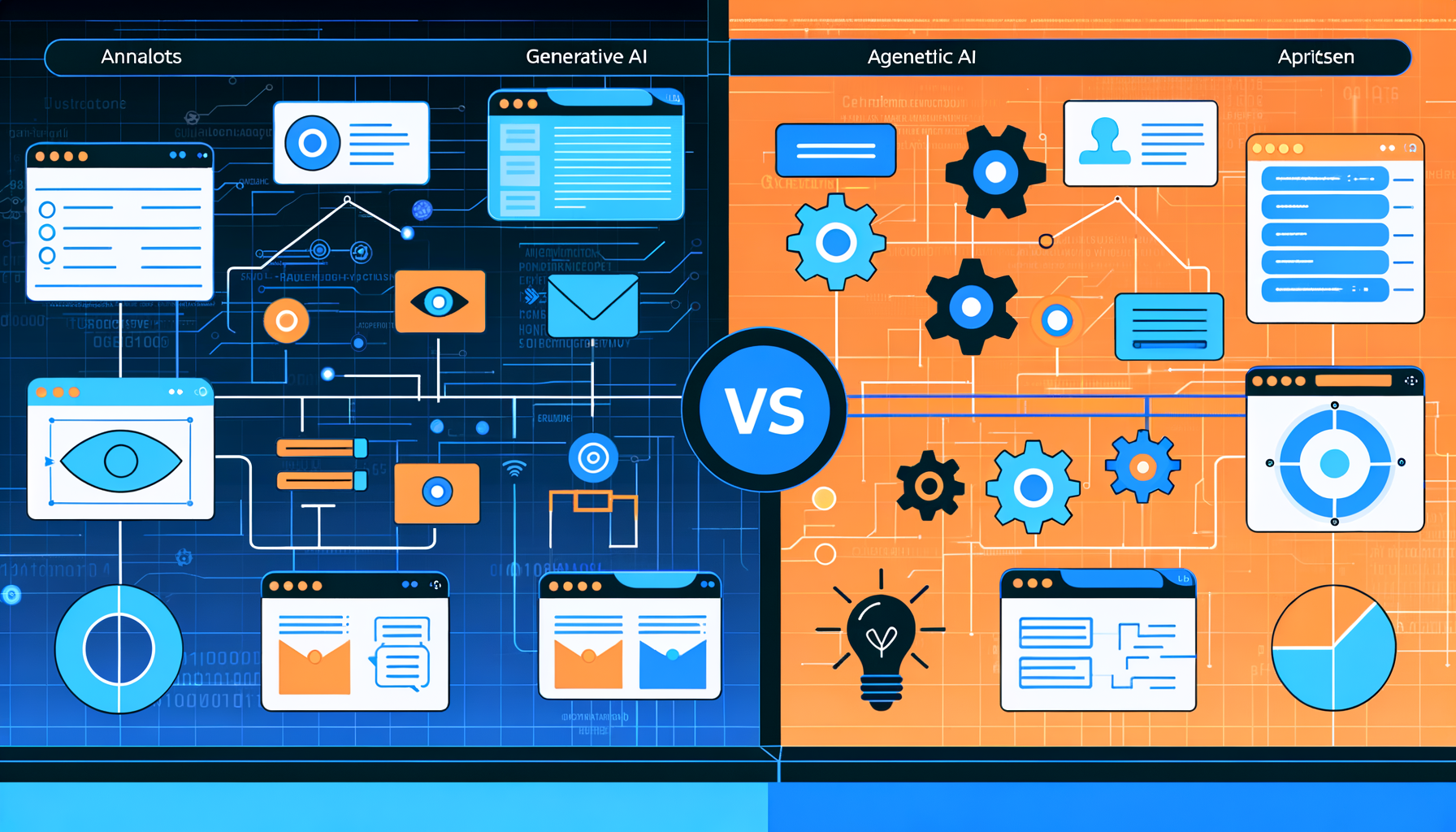Why We Built Two AI Platforms: The Strategic Divide Between Conversational and Operational AI

Why We Built Two AI Platforms: The Strategic Divide Between Conversational and Operational AI
At Fruition, we’ve taken a unique approach to AI implementation by developing two distinct platforms: FruGPT for conversational AI interactions and FCP (Fruition Control Plane) for operational workflow automation. This wasn’t an accident or feature creep—it’s a deliberate strategy based on understanding that enterprise and government organizations need specialized AI solutions for different challenges.
The Two Paradigms of Enterprise AI
Through our work with government agencies, airports, and industrial facilities, we’ve identified that AI adoption falls into two fundamentally different categories:
Conversational AI: The Strategic Advisor
FruGPT represents the conversational, knowledge-synthesis side of AI. It’s designed for:
- Strategic planning and analysis
- Content creation and research
- Data interpretation and insights
- Creative problem-solving
- Knowledge extraction from documents
- Decision support for executives
Operational AI: The Automated Workforce
FCP represents the process automation side of AI. It’s built for:
- Procurement processing and vendor management
- Permit applications and regulatory compliance
- Quality control and inspection workflows
- Asset management and maintenance scheduling
- Case management and citizen services
- 24/7 operational monitoring
Why Government and Enterprise Need Both
The Airport Example
Consider a major international airport we work with:
FruGPT helps them:
- Analyze passenger flow patterns to optimize terminal layouts
- Generate RFP responses for vendor selection
- Create emergency response documentation
- Research best practices from other airports globally
FCP automates their:
- Gate assignment workflows based on real-time flight data
- Vendor credentialing and badge processing
- Maintenance work order generation and tracking
- Regulatory compliance reporting to FAA
One platform handles strategic thinking; the other handles operational execution.
The Government Agency Example
A state government agency uses our platforms differently:
FruGPT enables:
- Policy research and legislative impact analysis
- Citizen communication drafting
- Budget planning and forecasting
- Strategic initiative development
FCP automates:
- Permit application processing (reducing 3-week waits to 2 days)
- Procurement bid evaluation and scoring
- FOIA request handling and document retrieval
- Inter-department approval workflows
The Four Critical Differences
1. Security and Compliance Models
FruGPT Security:
- Enterprise data encryption with conversational privacy
- GDPR, HIPAA, and SOC 2 compliance
- Secure knowledge base isolation
- Private deployment options
FCP Security:
- FedRAMP and StateRAMP compliance
- FISMA and NIST 800-53 controls
- Complete audit trails for every action
- Air-gapped operations for classified work
- Role-based access with approval chains
Government operations require a completely different security posture than conversational AI.
2. User Base and Interface
FruGPT Users:
- Executives and decision-makers
- Content creators and marketers
- Analysts and researchers
- Customer service teams
- Anyone needing AI-assisted thinking
FCP Users:
- Operations managers
- Compliance officers
- IT administrators
- Process owners
- Audit and oversight teams
The interfaces reflect these different users—chat for FruGPT, dashboards for FCP.
3. Integration Requirements
FruGPT Integrations:
- SharePoint and document repositories
- Communication platforms (Teams, Slack)
- CRM and customer data systems
- Business intelligence tools
- Knowledge management systems
FCP Integrations:
- SAP and Oracle ERP systems
- ServiceNow and ticketing platforms
- Permit and licensing systems
- Asset management tools
- Specialized government platforms
These are completely different technology ecosystems.
4. Success Metrics
FruGPT Success:
- Quality of insights generated
- Time saved in research
- Content creation efficiency
- Decision-making improvement
- User satisfaction scores
FCP Success:
- Process cycle time reduction
- Error rate decrease
- Compliance violation reduction
- Cost savings achieved
- Citizen satisfaction improvement
Real-World Impact: Why Specialization Matters
Case Study: State Transportation Department
Challenge: Processing thousands of overweight vehicle permits manually took weeks, creating trucking delays and economic impact.
FruGPT Role: Analyzed historical permit data to identify optimization opportunities and drafted new processing guidelines.
FCP Implementation:
- Automated permit evaluation against route restrictions
- Integrated with state DOT systems for real-time road conditions
- Reduced processing from 14 days to 4 hours
- Achieved 99.7% accuracy rate
Result: $2.3M annual economic benefit from reduced delays.
Case Study: Major International Airport
Challenge: Managing 500+ daily vendor access requests while maintaining security compliance.
FruGPT Role: Researched TSA best practices and created comprehensive security protocols.
FCP Implementation:
- Automated background check integration
- Real-time badge printing upon approval
- Compliance tracking and reporting
- Integration with airport security systems
Result: 90% reduction in badge processing time, zero security violations.
The Technical Architecture Divide
FruGPT Technical Stack
- Large Language Models optimized for reasoning
- RAG systems for accurate knowledge retrieval
- Vector databases for semantic search
- Streaming architecture for real-time conversation
FCP Technical Stack
- Multi-agent orchestration for complex workflows
- State machines for process management
- Enterprise service bus for system integration
- Event-driven architecture for real-time processing
These aren’t variations of the same technology—they’re fundamentally different architectures solving different problems.
Why One Platform Can’t Do Both
We’ve seen vendors try to create “all-in-one” AI platforms. They fail because:
- Conflicting Requirements: Conversational flexibility vs. operational precision
- Security Compromises: Chat security vs. system-level access needs
- User Experience: Knowledge workers vs. operations teams need different interfaces
- Integration Complexity: Document systems vs. operational systems require different approaches
- Pricing Models: Per-user licensing vs. per-process automation pricing
The Future: AI-Powered Government and Enterprise
Organizations that understand the distinction between conversational and operational AI are seeing transformative results:
Three-Layer Strategy for Modern Operations
- Human Layer: Leadership, creativity, citizen interaction
- Conversational AI (FruGPT): Analysis, planning, communication
- Operational AI (FCP): Process execution, automation, monitoring
The Multiplication Effect
When used together, these platforms create exponential value:
- FruGPT analyzes bottlenecks → FCP automates solutions
- FCP generates data → FruGPT provides insights
- FruGPT drafts procedures → FCP implements workflows
Making the Right Choice for Your Organization
Choose FruGPT When You Need:
- Strategic planning support
- Policy research and development
- Content creation at scale
- Data analysis and insights
- Knowledge management
- Executive decision support
Choose FCP When You Need:
- Process automation at scale
- Regulatory compliance automation
- Operational efficiency gains
- 24/7 workflow processing
- System integration and orchestration
- Audit trail requirements
Implement Both When You Want:
- Complete digital transformation
- Maximum operational efficiency
- Data-driven decision making
- Citizen service excellence
- Future-ready operations
Conclusion: The Specialized AI Advantage
Building two AI platforms wasn’t about creating more products—it was about solving real operational challenges with the right tools. FruGPT enhances human intelligence; FCP automates operational workflows.
In our experience with government agencies, airports, and industrial operations, organizations that implement both specialized AI platforms see:
- 70% faster strategic planning
- 85% reduction in manual processing
- 90% improvement in compliance
- $1M+ annual operational savings
The future belongs to organizations that understand AI isn’t one-size-fits-all. It’s about having the right AI for the right job.
Ready to transform your operations? Try FruGPT for strategic AI assistance or schedule a demo of FCP automation to see how specialized AI platforms can revolutionize your organization.





